CBS News
Major 7.8 earthquake rocks Turkey and Syria, killing more than 600
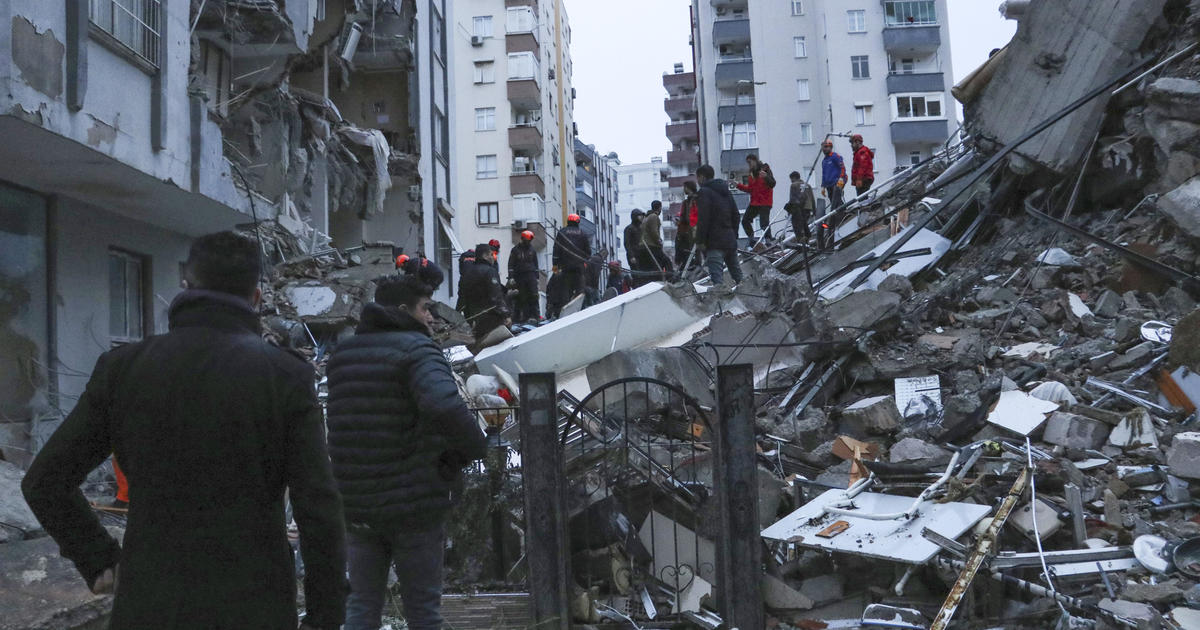
IHA agency via AP
A powerful 7.8 magnitude earthquake hit southern Turkey and northern Syria early Monday, toppling buildings and killing at least 641 people. With hundreds upon hundreds injured and hundreds more believed trapped under rubble, the toll was expected to rise as rescue workers combed through rubble in cities and towns across the region.
On both sides of the border, residents jolted out of sleep by the pre-dawn quake rushed outside on a cold, rainy and snowy winter night. Buildings were flattened and strong aftershocks continued.
Rescue workers and residents raced to search for survivors under the rubble of their homes in multiple cities, working through tangles of metal and chunks of concrete.
Turkey’s Disaster and Emergency Management agency said at least 284 people were killed in seven Turkish provinces. The agency said 440 people were injured. The death toll in government-held areas of Syria climbed to 237 with more than 630 injured, according to Syrian state media. At least 120 people were killed in rebel-held areas, according to the White Helmets, the emergency organization in opposition areas.
In the Turkish city of Adana, one resident said three buildings near his home collapsed. “I don’t have the strength anymore,” one survivor could be heard calling out from beneath the rubble as rescue workers tried to reach him, said the resident, journalism student Muhammet Fatih Yavus. Further east in Diyarbakir, cranes and rescue teams rushed people on stretchers out of a mountain of pancaked concrete floors that was once an apartment building.
On the Syrian side of the border, the quake smashed opposition-held regions that are packed with some 4 million people displaced from other parts of Syria by the country’s long civil war. Many of them live in decrepit conditions with little health care, with Russian-backed Syrian forces surrounding the area and sometimes carrying out airstrikes. Rescue workers said hospitals in the area were packed.
“We fear that the deaths are in the hundreds,” Muheeb Qaddour, a doctor, said by phone from the town of Atmeh, referring to the entire rebel-held area. Raed Salah, the head of the White Helmets, said whole neighborhoods were collapsed in some areas.
The quake, felt as far away as Cairo, struck a region that has been shaped by more than a decade of civil war in Syria. Millions of Syrian refugees live in Turkey. The swath of Syria affected by the quake is divided between government-held territory and the country’s last opposition-held enclave, which is surrounded by Russian-backed government forces. The quake was centered about 60 miles from the Syrian border outside the city of Gaziantep, a major Turkish provincial capital.
The U.S. Geological Survey said the quake was 11 miles deep.
At least 20 aftershocks followed, some hours later during daylight, the strongest measuring 6.6, Turkish authorities said.
U.S. National Security Adviser Jake Sullivan issued a statement saying, “The United States is profoundly concerned by the reports of today’s destructive earthquake in Turkiye and Syria. We stand ready to provide any and all needed assistance. President Biden has directed USAID and other federal government partners to assess U.S. response options to help those most affected. We will continue to closely monitor the situation in coordination with the Government of Turkiye.”
Many other nations offered to help as well. Among them: France, Germany, Greece and — war-torn Ukraine, whose president, Volodomyr Zelenskyy, said Ukraine is “close to the friendly Turkish people” and ready to provide assistance, the Reuters news service reported.
Turkish President Recep Tayyip Erdogan said on Twitter that “search and rescue teams were immediately dispatched” to the areas hit by the quake.
“We hope that we will get through this disaster together as soon as possible and with the least damage,” he wrote.
Turkey’s defense ministry said Turkish armed forces set an air corridor to enable search and rescue teams to get to the quake zone, according to Reuters.
The Turkish maritime authority said the port of Iskenderun in southern Turkey was damaged by the quake but operations were continuing at other ports, Reuters reported.
Oil was flowing as usual through two major pipelines in Turkey, Reuters said, citing an energy official but adding that operations at the Ceyhan oil terminal in southern Turkey were suspended, according to the Tribeca shipping agency.
A gas pipeline was damaged and the flow of gas was stopped to three provinces and areas near them, Reuters quoted Turkish state pipeline operator BOTAS as saying.
Turkey’s Akkuyu nuclear power plant, which is being built, wasn’t damaged by the quake, Reuters cites an official of the Russian company constructing the plant as saying.
Buildings were reported collapsed in a swath from Syria’s cities of Aleppo and Hama to Turkey’s Diyarbakir, more than 200 miles to the northeast.
In Turkey, people trying to leave the quake-stricken regions caused traffic jams, hampering efforts of emergency teams trying to reach the affected areas. Authorities urged residents not to take to the roads. Mosques around the region were being opened up as a shelter for people unable to return to damaged homes amid temperatures that hovered around freezing.
In Diyarbakir, rescue teams called for silence as they tried to listen for survivors under the wreckage of an 11-story building. Rescue workers pulled out one man, carrying him on a stretcher through a dense crowd of hundreds of people anxiously watching the rescue efforts. A gray-haired woman wailed before being escorted away by a man, while a rescue worker wearing a white helmet tried to calm a crying girl who was also being cuddled by two friends.
In northwest Syria, the opposition’s Syrian Civil Defense described the situation in the rebel-held region as “disastrous” adding that entire buildings have collapsed and people are trapped under the rubble. The civil defense urged people to evacuate buildings to gather in open areas. Emergency rooms were full of injured, said Amjad Rass, president of the Syrian American Medical Society.
In Damascus, buildings shook and many people went down to the streets in fear.
The quake jolted residents in Lebanon from beds, shaking buildings for about 40 seconds. Many residents of Beirut left their homes and took to the streets or drove in their cars away from buildings.
The earthquake came as the Middle East is experiencing a snowstorm that’s expected to continue until Thursday.
Turkey sits on top of major fault lines and is frequently shaken by earthquakes.
Some 18,000 were killed in powerful earthquakes that hit northwest Turkey in 1999.
CBS News
Satellite images show damage from Israeli attack at 2 secretive Iranian military bases

An Israeli attack on Iran damaged facilities at a secretive military base southeast of the Iranian capital that experts in the past have linked to Tehran’s onetime nuclear weapons program and at another base tied to its ballistic missile program, satellite photos analyzed Sunday by The Associated Press show.
Some of the buildings damaged sat in Iran’s Parchin military base, where the International Atomic Energy Agency suspects Iran in the past conducted tests of high explosives that could trigger a nuclear weapon. Iran long has insisted its nuclear program is peaceful, though the IAEA, Western intelligence agencies and others say Tehran had an active weapons program up until 2003.
The other damage could be seen at the nearby Khojir military base, which analysts believe hides an underground tunnel system and missile production sites.
Israel launched a series of strikes on Iranian military facilities in retaliation for the barrage of ballistic missiles the Islamic republic fired on Israel earlier this month.
Planet Labs PBC / AP
Iran’s military has not acknowledged damage at either Khojir or Parchin from Israel’s attack early Saturday, though it has said the assault killed four Iranian soldiers working in the country’s air defense systems.
Iran’s mission to the United Nations did not immediately respond to a request for comment, nor did the Israeli military.
However, Iranian Supreme Leader Ayatollah Ali Khamenei on Sunday told an audience that the Israeli attack “should not be exaggerated nor downplayed,” while stopping short of calling for an immediate retaliatory strike. Israeli Prime Minister Benjamin Netanyahu said Sunday that the strikes “severely harmed” Iran and achieved all of Israel’s goals.
“The air force struck throughout Iran. We severely harmed Iran’s defense capabilities and its ability to produce missiles that are aimed toward us,” Netanyahu said in his first public comments on the strikes.
It remains unclear how many sites in total were targeted in the Israeli attack. There have been no images of damage so far released by Iran’s military.
Planet Labs PBC / AP
Iranian officials have identified affected areas as being in Ilam, Khuzestan and Tehran provinces. Burned fields could be seen in satellite images from Planet Labs PBC around Iran’s Tange Bijar natural gas production site in Ilam province on Saturday, though it wasn’t immediately clear if it was related to the attack. Ilam province sits on the Iran-Iraq border in western Iran.
The most telling damage could be seen in Planet Labs images of Parchin, some 40 kilometers (25 miles) southeast of downtown Tehran near the Mamalu Dam. There, one structure appeared to be totally destroyed while others looked damaged in the attack.
At Khojir, some 20 kilometers (12 miles) away from downtown Tehran, damage could be seen on at least two structures in satellite images.
Analysts including Decker Eveleth at the Virginia-based think tank CNA, Joe Truzman at the Washington-based Foundation for Defense of Democracies and former United Nations weapon inspector David Albright, as well as other open-source experts, first identified the damage to the bases. The locations of the two bases correspond to videos obtained by the AP showing Iranian air defense systems firing in the vicinity early Saturday.
At Parchin, Albright’s Institute for Science and International Security identified the destroyed building against a mountainside as “Taleghan 2.” It said an archive of Iranian nuclear data earlier seized by Israel identified the building as housing “a smaller, elongated high explosive chamber and a flash X-ray system to examine small-scale high explosive tests.”
“Such tests may have included high explosives compressing a core of natural uranium, simulating the initiation of a nuclear explosive,” a 2018 report by the institute says.
Planet Labs PBC / AP
In a message posted to the social platform X early Sunday, the institute added: “It is not certain whether Iran used uranium at ‘Taleghan 2,’ but it is possible it studied the compression of natural uranium hemispheres, which would explain its hasty and secretive renovation efforts following the IAEA’s request to access Parchin in 2011.”
It’s unclear what, if any, equipment would have been inside of the “Taleghan 2” building early Saturday. There were no Israeli strikes on Iran’s oil industry, nor its nuclear enrichment sites or its nuclear power plant at Bushehr during the assault.
Rafael Mariano Grossi, who leads the IAEA, confirmed that on X, saying “Iran’s nuclear facilities have not been impacted.”
“Inspectors are safe and continue their vital work,” he added. “I call for prudence and restraint from actions that could jeopardize the safety & security of nuclear & other radioactive materials.”
Other buildings destroyed at Khojir and Parchin likely included a warehouse and other buildings where Iran used industrial mixers to create the solid fuel needed for its extensive ballistic missile arsenal, Eveleth said.
In a statement issued immediately after the attack Saturday, the Israeli military said it targeted “missile manufacturing facilities used to produce the missiles that Iran fired at the state of Israel over the last year.”
Destroying such sites could greatly disrupt Iran’s ability to manufacture new ballistic missiles to replenish its arsenal after the two attacks on Israel. Iran’s paramilitary Revolutionary Guard, which oversees the country’s ballistic missile program, has been silent since Saturday’s attack.
Iran’s overall ballistic missile arsenal, which includes shorter-range missiles unable to reach Israel, was estimated to be “over 3,000” by Gen. Kenneth McKenzie, then-commander of the U.S. military’s Central Command, in testimony to the U.S. Senate in 2022. In the time since, Iran has fired hundreds of missiles in a series of attacks.
There have been no videos or photos posted to social media of missile parts or damage in civilian neighborhoods following the recent attack – suggesting that the Israeli strikes were far more accurate than Iran’s ballistic missile barrages targeting Israel in April and October. Israel relied on aircraft-fired missiles during its attack.
However, one factory appeared to have been hit in Shamsabad Industrial City, just south of Tehran near Imam Khomeini International Airport, the country’s main gateway to the outside world. Online videos of the damaged building corresponded to an address for a firm known as TIECO, which advertises itself as building advanced machinery used in Iran’s oil and gas industry.
Officials at TIECO requested the AP write the company a letter before responding to questions. The firm did not immediately reply to a letter sent to it.
CBS News
Here Comes the Sun: Will Ferrell, Harper Steele and more

Watch CBS News
Be the first to know
Get browser notifications for breaking news, live events, and exclusive reporting.
CBS News
The Strange Shooting of Alex Pennig

Watch CBS News
Be the first to know
Get browser notifications for breaking news, live events, and exclusive reporting.





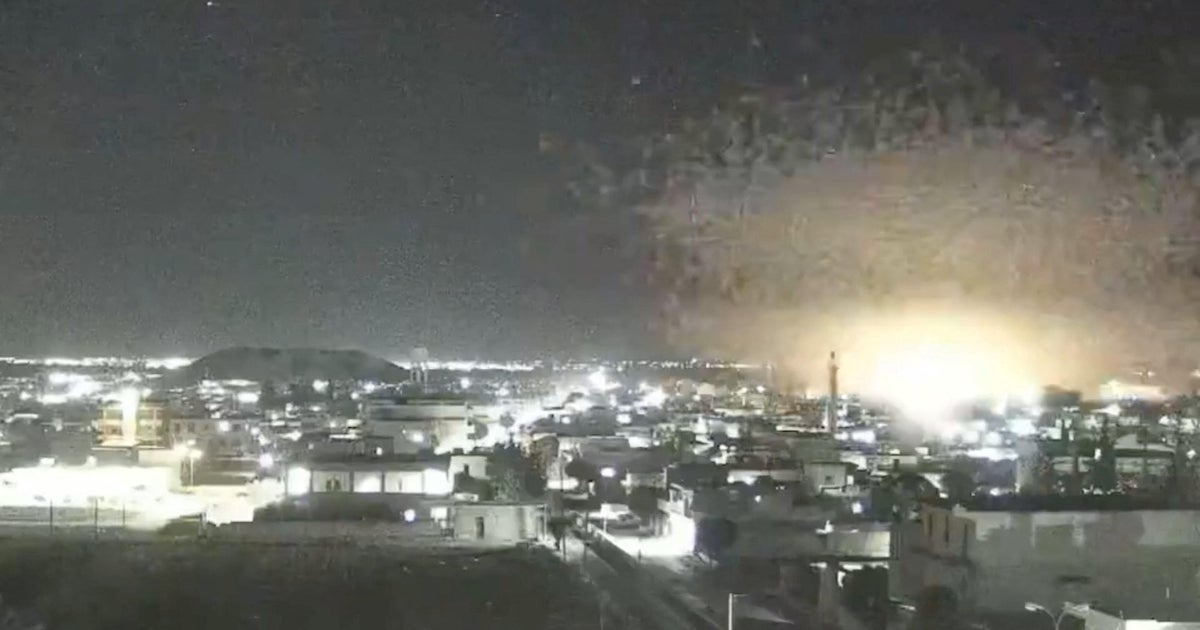


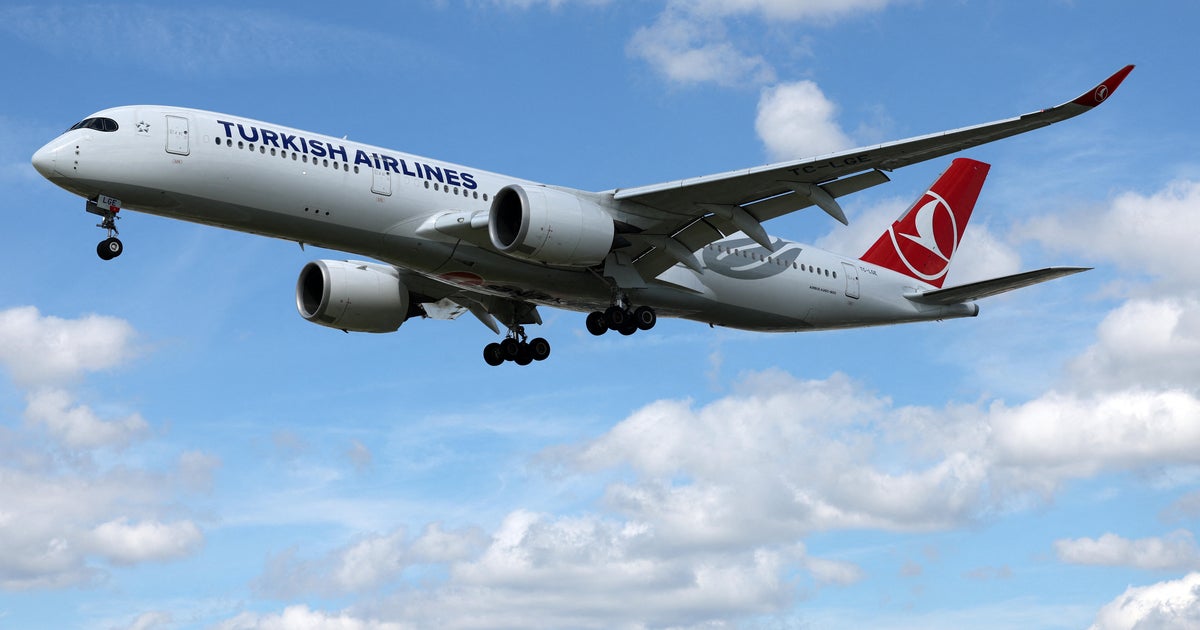
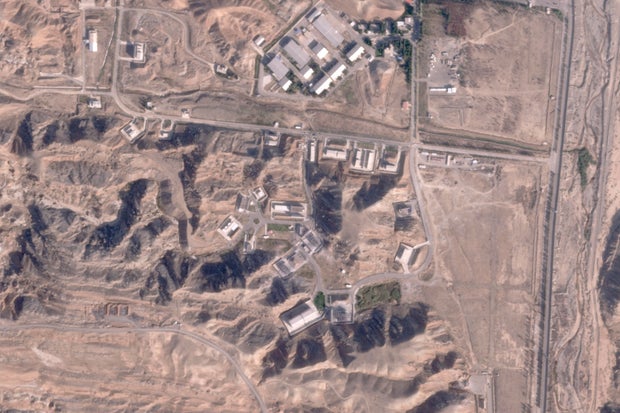
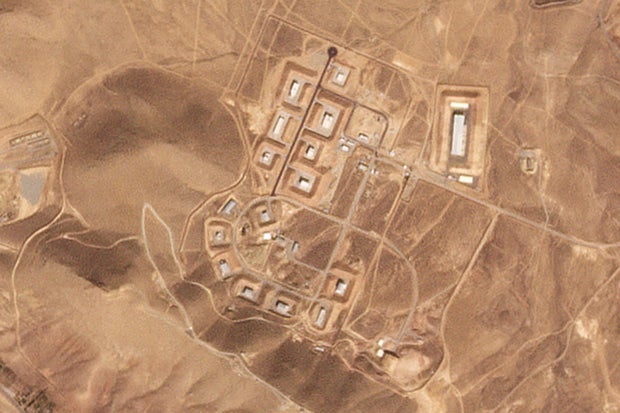

GIPHY App Key not set. Please check settings